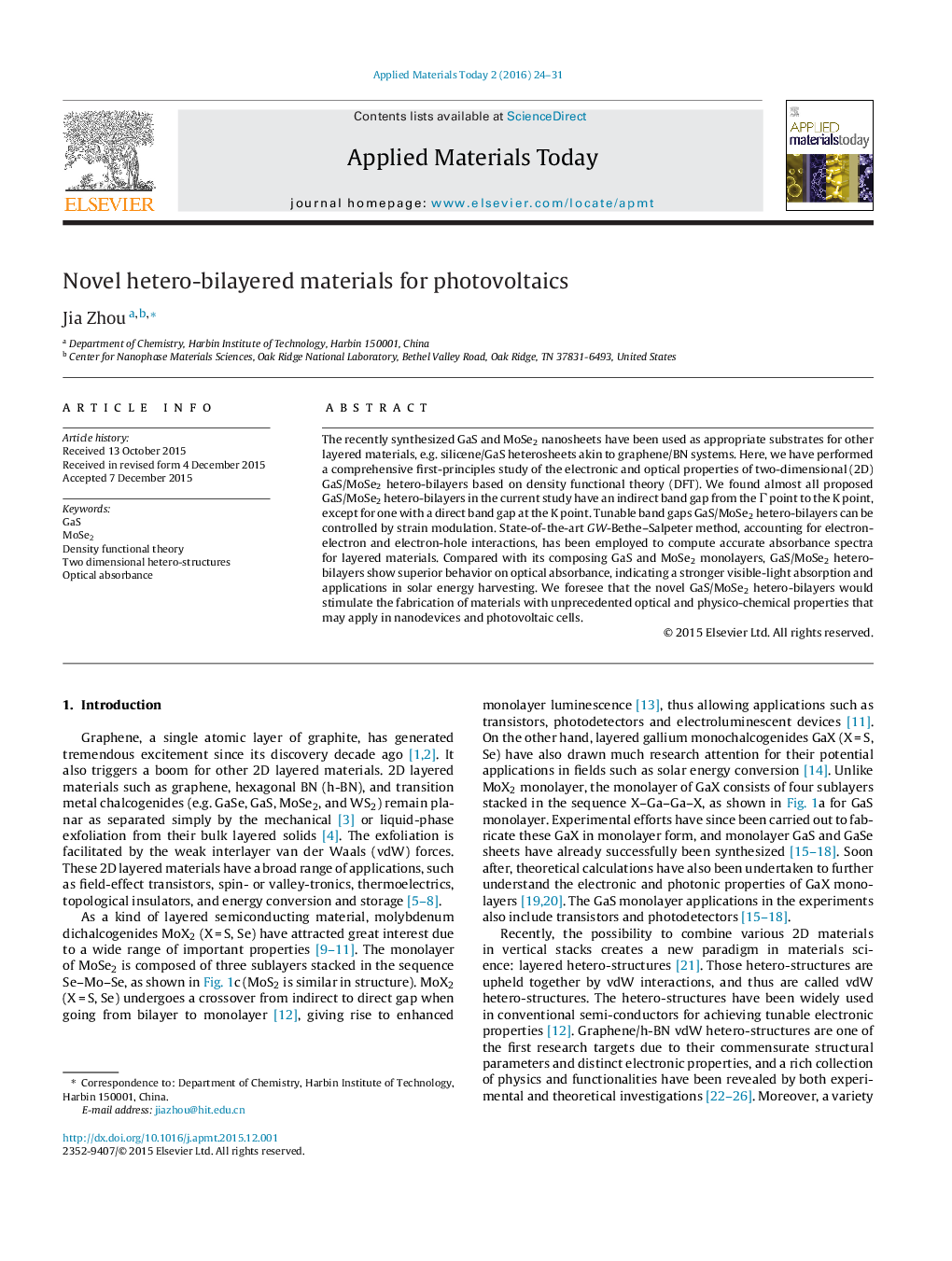| کد مقاله | کد نشریه | سال انتشار | مقاله انگلیسی | نسخه تمام متن |
|---|---|---|---|---|
| 1412952 | 1508785 | 2016 | 8 صفحه PDF | دانلود رایگان |
• GaS/MoSe2 hetero-structures have been studied based on first-principles calculations.
• The hetero-bilayers have superior behavior on optical absorbance.
• The optical absorbance spectra have been examined by GW-Bethe–Salpeter method..
The recently synthesized GaS and MoSe2 nanosheets have been used as appropriate substrates for other layered materials, e.g. silicene/GaS heterosheets akin to graphene/BN systems. Here, we have performed a comprehensive first-principles study of the electronic and optical properties of two-dimensional (2D) GaS/MoSe2 hetero-bilayers based on density functional theory (DFT). We found almost all proposed GaS/MoSe2 hetero-bilayers in the current study have an indirect band gap from the Γ point to the K point, except for one with a direct band gap at the K point. Tunable band gaps GaS/MoSe2 hetero-bilayers can be controlled by strain modulation. State-of-the-art GW-Bethe–Salpeter method, accounting for electron-electron and electron-hole interactions, has been employed to compute accurate absorbance spectra for layered materials. Compared with its composing GaS and MoSe2 monolayers, GaS/MoSe2 hetero-bilayers show superior behavior on optical absorbance, indicating a stronger visible-light absorption and applications in solar energy harvesting. We foresee that the novel GaS/MoSe2 hetero-bilayers would stimulate the fabrication of materials with unprecedented optical and physico-chemical properties that may apply in nanodevices and photovoltaic cells.
GaS/MoSe2 hetero-bilayers show superior behavior on optical absorbance, indicating a strong visible-light absorption and applications in solar energy harvesting.Figure optionsDownload as PowerPoint slide
Journal: Applied Materials Today - Volume 2, March 2016, Pages 24–31
